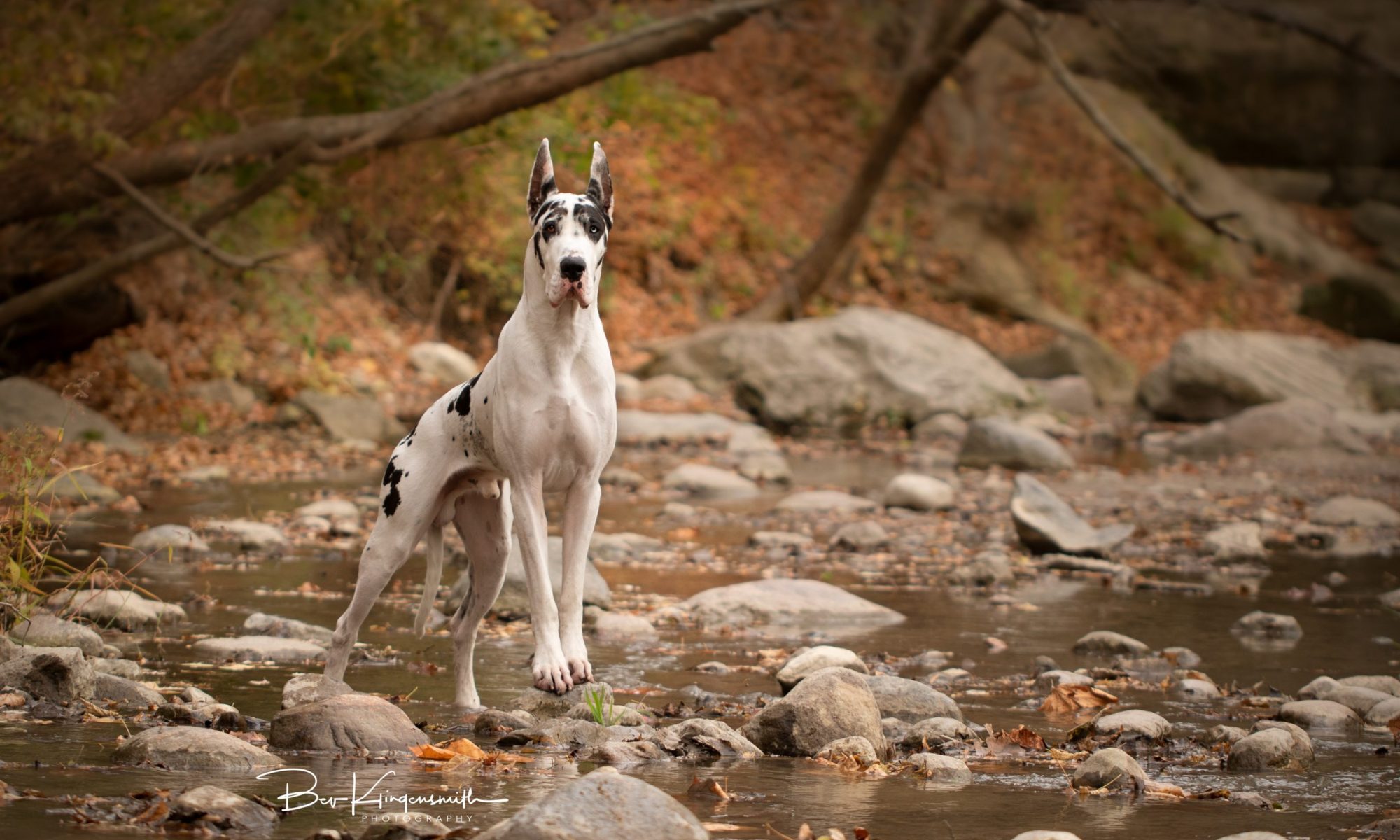Temperament is both nature and nurture, meaning that you have to start with good genetics and then do things right when raising the puppies. Dogs with questionable temperaments should not be bred.
We take our role for the first 8-9 weeks of the puppy’s life very seriously. We also expect our puppy people to work at training and appropriate socializing once the pup heads off to their new home, to ensure the pup reaches their full potential. In their new homes, all puppies should have at least one round of puppy class and at least 1-2 rounds of basic obedience. Minimum. We want our puppies to grow into confident, happy, and sound adults.
The process of the next generation starts long before breeding plans are even made. For a dog to be considered appropriate to be bred, they need to have a solid temperament. They also need to pass appropriate health testing (learn about the CHIC program), be of sound structure, and be “typy” (have appropriate physical traits that make a Dane look like a Dane) – check out the AKC Great Dane standard.
Fast forward to when we have a litter. The puppies are whelped in our home. I sleep next to the whelping box and spent lots of time worrying about every puppy.
We start the Bio-Sensor program when the puppies are three days old. This is in addition to the normal handling a puppy receives.
We believe in “seven surfaces by seven weeks”, meaning by the time the puppies are seven weeks old, they have had positive exposure to seven different surfaces (grass, carpet, hardwood, cement, gravel, etc.). We expose them to all sorts of sounds, to help avoid a spooky adult dog. While the pups are still secure with their littermates, they hear things like loud radios, vacuums, noisy toys, etc.
We encourage lots of visitors (post 4-weeks old), so they can meet all sorts of different people and learn early that new people are fun, not scary. The more positive experiences they have as a youngster, the more confident they become as an adult.
Once pups graduate from the whelping box at 4-weeks old, we use a raised-floor crate, with bedding on one side. This set-up, along with obvious frequent cleaning, allows for the pups to learn the importance of being kept clean. If a pup is raised in filth, house training becomes tougher.
We keep their crate next to an outside door and the puppies are ushered outside upon waking from naps, so they start to learn the concept of going outside to potty. When they are ready for new homes, they are well on the way to being potty trained.
They are introduced to regular crates, as a safe den. By the time they hit 8-9 weeks, they are happy to go into a crate for a nap.
The puppies take car rides and also get to explore our yard and house, beyond their puppy area.
They are introduced to collars and leashes, so they aren’t overly stressed with too many new things when they head off to new homes.
Puppies are weaned onto a raw food diet, but kibble is also introduced after the initial weaning process. My goal is to make the puppy’s transition from my home to their future home as stress-free as possible, which includes diet. Puppies will be sent off to their new homes with some of the kibble we use while they are with us.
We do puppy nails frequently. I utilize a Dremel on all of my dogs and keep them nice and short. Long nails are not good for the structure of the dog’s foot.
